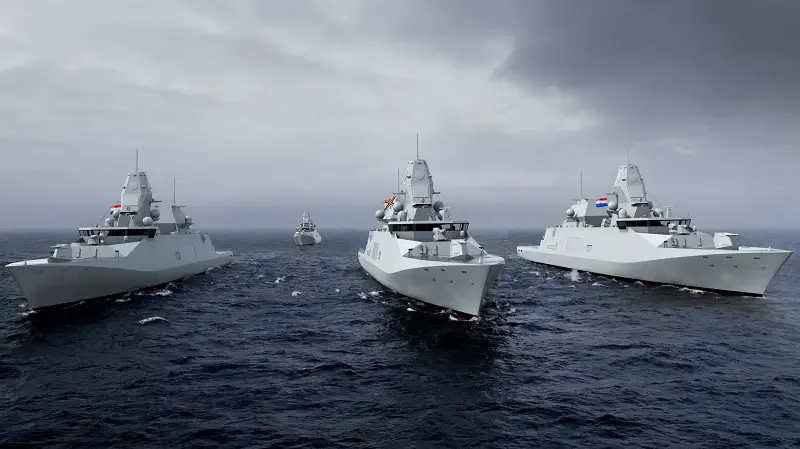In a significant development for both the Belgian and Royal Netherlands Navies, the Netherlands Ministry of Defence is currently overseeing the construction of four state-of-the-art anti-submarine warfare (ASW) frigates. The endeavor involves the creation of two frigates for each nation, fostering a strong partnership in the realm of maritime defense. The collaboration was solidified through the signing of a Memorandum of Understanding (MoU) between Defense Minister Kajsa Ollongren and her Belgian counterpart Ludivine Dedonder. This momentous occasion took place aboard the esteemed vessel Zr.Ms. De Ruyter, docked in the port of Antwerp, Belgium, preceding a royal state visit. It has come to light, however, that the project will incur higher costs than originally anticipated, as outlined in the revised MoU. This update signifies the dedication of both nations to prioritize the success of the joint endeavor.
The Belgian and Royal Netherlands have a history of close cooperation, extending beyond anti-submarine warfare (ASW) capabilities to encompass areas such as mine countermeasures, maintenance, education, and training. In 2018, a mutual agreement was reached to replace the existing four multipurpose frigates with ASW frigates under Dutch leadership, marking a significant step toward bolstering maritime defense capabilities. While the amended contracts are currently being finalized by the involved suppliers, it is expected that they will be signed later this month. The increase in project costs can be attributed, in part, to the economic impact of the ongoing COVID-19 pandemic. Furthermore, factors such as the conflict in Ukraine, the allocation of additional funding for advanced systems, and the procurement of extra ammunition have contributed to the budget adjustment.

The Netherlands Ministry of Defence said the Royal Netherlands Navy’s new anti-submarine warfare frigates will be in service in 2029. Setting out the full schedule for delivering the two ships planned for each navy under the program The second ship goes to Belgium a year later. The two remaining frigates will be delivered in the following years to the Netherlands and Belgium, respectively. Belgium’s Council of Ministers had approved the purchase. This will enable the Netherlands Defence Materiel Organization, acting on behalf of both countries and suppliers (Damen, as lead contractor and shipbuilder, and Thales Nederland, as radar and fire control system provider), to progress with program planning.
In a parallel initiative under Belgian leadership, both countries are also collaborating on the replacement of mine countermeasures vessels. The project entails the construction of six vessels per country, with the renowned French Naval Group undertaking this crucial task. This joint effort underscores the commitment of both nations to fortify their maritime defense capabilities and enhance regional security. The solution acquired by the Belgian and Royal Netherlands navies is a complete paradigm shift in the way mines are fought by adopting a remote position (stand-off), which reduces the risk for personnel and the mothership and allows a substantial increase in the speed of coverage of mined areas. This program demonstrates that European countries can work together to define their needs and share a solution that is destined to become a reference in the mine countermeasures field, not only for the Belgian and Royal Netherlands navies but also for other navies in Europe and around the world.















